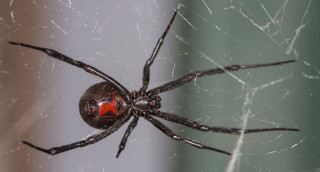Utah Spiders
Arachnids are a large class of arthropods (invertebrate animals) that include mites and ticks, scorpions, and the largest class, spiders. Spiders make up the majority of arachnids, with over 50,000 species living worldwide, and over 600 of them living in Utah!
Let’s Get Creative!
Spider Eye Cookies
With so many types of spiders worldwide, identification can be difficult. One way to ID a spider by family is to look at their eye pattern. Most spiders have 8 eyes but many have only 6, 4, or two. Here’s a fun activity to practice making spider eye patterns - with cookies!
Listed below are the ingredients you will need:
- Listed below are the supplies you will need:
- Sugar Cookies
- Frosting (any kind will work)
- Chocolate chips, nuts or large sprinkles to decorate
- An appetite for desserts and knowledge
Download the recipe and spider eye guide here!
Get Outside!

Help researchers by recording where Spiders live in Utah with iNaturalist.
- Take a walk outside to look for spiders, and photograph ones you come across. Useful spider observations added to iNaturalist should include at least one close-up photo, and, if possible a photo of the web.
- What is iNaturalist? Find out here.
- Read about making useful spider observations on iNaturalist
Connect with Local Experts
Join NHMU Citizen Science volunteer, iNaturalist Curator, and spider lover Rebecca Ray to learn more about Utah Spiders in this recorded interview.
Explore More
What makes a spider a spider? Here are the key features:
- 8 legs and 2 body parts (a cephalothorax and abdomen)
- spinnerets capable of making silk (all spiders make silk- but only some of them use this silk to catch prey)
- fangs capable of injecting venom (most venom is not poisonous to humans)
Investigate with Science Friday about the ecological importance of spiders, their fascinating role in communities and the intricate art of web making.

Don’t fear the Black Widow! Take a dive into the world of the Black Widow with NHMU science writer Riley Black and entomologist Christy Bills.
Did you know that spiders “listen” to the silk strands of their webs like stringed instruments? This is how they locate their prey and find what may have been caught in their web. Discover more fun facts about Spiders and Invertebrates with National Geographic for Kids.
Still curious about spiders? Search ABC education articles to look into your spider questions and learn more!.